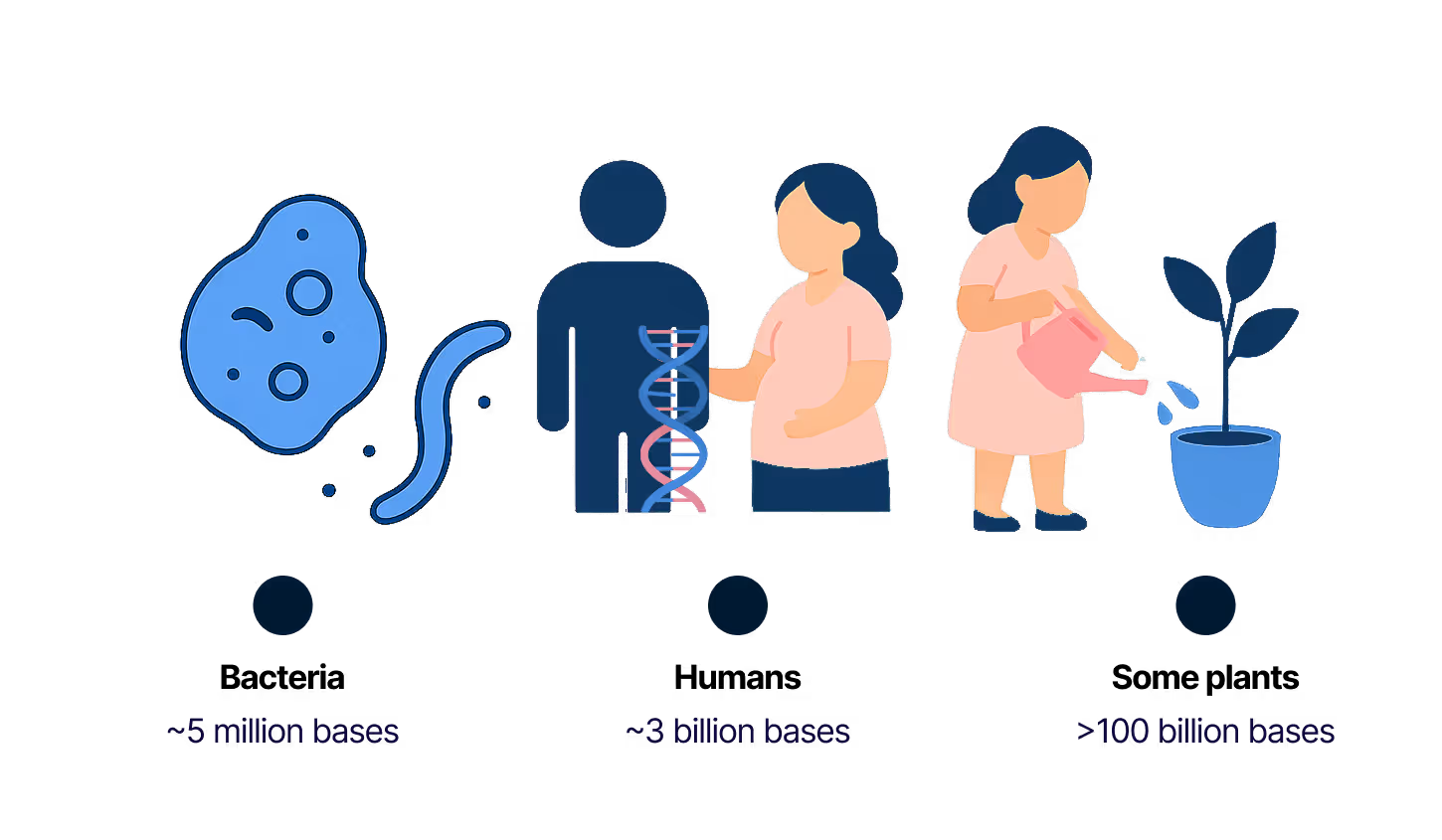Know your and your family's genetic risks. Get expert support and reliable genetic testing in UK with Jeen.

Use responsibly. T&Cs & late fees apply at clearpay.co.uk/terms


Your DNA holds valuable clues about your health. Genetic testing helps you discover inherited risks like certain cancers or conditions you could pass to your children. At Jeen Health, we make this science simple, accessible, and personal.
With expert-led guidance and an easy at-home test, you can take control of your health journey. Whether you're planning a family, concerned about cancer, or just want answers, genetic testing offers clarity and confidence.

Trusted specialists



Speak to our expert geneticists/midwifes,
design your personalised test

Get your test through the mail,
easy oral self-swab

Get your detailed report and
recommendations

We offer expert advice and testing for a range of genes that may increase your risk of developing certain types of cancer.
View Full Gene List
At Jeen, we focus on health, not hair colour. Our genetic testing uses 50x sequencing depth for greater accuracy and confidence in detecting inherited conditions.

DNA is broken into small fragments, sequenced, and computationally assemble into the full genome.

Sequencing depth is how many times your DNA is read. Higher depth = more accurate results, lower depth = risk of missed mutations.

Larger genomes (like humans) need more sequencing reads. That’s why high-depth testing matters—it ensures nothing is missed.
Not all genetic tests are created equal. At Jeen, we use 50x sequencing coverage, which means each section of your DNA is read around 50 times. Here’s why it makes a difference:
Bigger genome → more data needed
Higher depth → better accuracy
Balance cost vs. detail!
Have questions? We’re here to help. Genetic testing can feel overwhelming—but it doesn’t have to be. Our NHS-trained genetic counsellors are here to walk you through your options, explain the science in plain English, and help you decide if testing is right for you.
Watch Ailidh Watson's, our genetic counsellor lead, video on what genetics is.
Know your genes, protect your future. Over 5,000 diseases are linked to genetic mutations. Early insights through genetic testing can help with prevention, early detection and personalised healthcare decisions.
Testing 50 Genes Linked With Various Cancers

Testing ~800 Conditions That Could Affect Your Baby

Over 5,000 diseases are linked to genetic mutations

NIPT gives you a safe and early look at your baby’s health – explore the conditions we can screen for during pregnancy
A highly accurate NIPT that screens for common and rare genetic conditions in your baby including microdeletions.

Comprehensive blood tests for cancer markers, helping detect risks early with results guided by medical specialists.

Advanced NIPT available for single or twin pregnancies, egg donors and IVF. Optional panels for microdeletions and rare syndromes.

A cost-effective, high-quality NIPT that screens for common conditions and can include testing for inherited conditions.

Genetic testing looks at your DNA to find changes or variants in your genes. These changes can tell us if you’re at risk for certain inherited conditions, like hereditary cancers or if you’re a carrier for a genetic condition.
It can reveal if you have a higher genetic risk for certain cancers (like breast, ovarian or bowel), if you’re a carrier for inherited conditions, or if you have a genetic condition that could impact your health or your family’s.
No - genetic testing shows your risk, not a guarantee. Some people with a genetic variant never develop the condition, while others without a variant might still be affected due to lifestyle or environmental factors.
It’s simple - you speak with one of our expert Genetic Counsellors, receive a home kit in the post, collect a cheek swab, and send it back. Your DNA is analysed in a UK or US lab, and results are ready in under 4 weeks.
Yes. At Jeen Health, your data is encrypted and stored securely on our GDPR compliant servers, as well as with our vetted laboratories. Your results are only shared with you and your dedicated Genetic Counsellor, never with insurers or third parties.
Not at all. While a strong family history increases your risk, many people with genetic conditions have no known family history. Testing helps you uncover hidden risks you wouldn’t otherwise know about.
Our team of Expert Specialists is here to help. Whether you're curious about testing, your results, or what’s right for you. We're just a message away.